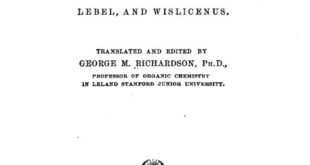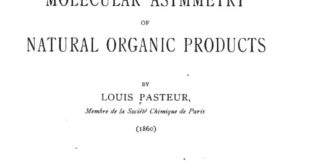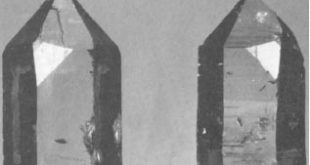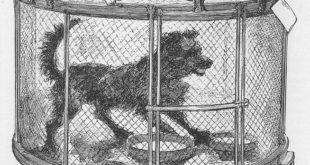February 25, 1884. — The Academy received with favour our preceding communications on rabies, incomplete though they were, justly considering that each step forward in the experimental study of that disease deserved to be encouraged.
The new facts which I shall have the honour to communicate to-day — in my own name and in the name of my fellow-workers, amongst whom I ought to name Thuillier, who worked with us before he left for Egypt — have all been ascertained by the use of the two highly valuable methods of inoculation of the virus of rabies on the surface of the brain after trephining, and of injection of the same into the blood system. The expression ‘after trephining ‘ carries with it the notion of an opera tion both long and unsafe in itself, and yet it is not so in reality. We have performed it many hundred times on dogs, rabbits, guinea-pigs, fowl, monkeys, sheep and other animals, and yet the failures could easily be counted on the fingers. The manual dexterity required for its application is also within the reach of most people. A young laboratory assistant was thus very rapidly taught by M. Roux, and is now entrusted with the performance of all our trephining operations, and the operative casualties are altogether unimportant. Neither is the operation lengthy. The last monkey trephined was chloroformed, operated upon, and got over the after-effects of the anaesthetic in twenty minutes. In another quarter of an hour he was eating a fig. In order to make this paper shorter I shall content myself with giving, in the form of conclusions, the sum of the results come to.
- In the communication of December 11,1882, I said that the inoculation of the virus of rabies into the blood system generally gave rise to paralytic rabies, with absence of furor and rabid voice. It seemed probable in those conditions that the virus fixed itself and multiplied, first of all, in the spinal cord. We sacrificed several dogs on the appearance of the first symptoms of paralysis, and then, by a comparative study of the spinal cord (in the lumbar swelling in particular) and of the medulla oblongata, we discovered that the former was occasionally virulent when the latter was not yet so.
- It has been shown already that the virus of rabies is located in the encephalon and in the spinal cord. We have more recently looked for it in the nerves themselves, and in the salivary glands. We have been able to reproduce the disease by means of small portions of the pneumogastric taken either near its origin, just outside the cranium, or at more distant points. So also with the sciatic nerves, and the submaxillary, parotid, and sublingual glands. The whole nervous system, then, from the centre to the periphery, is capable of cultivating the virus. It is thus easy to explain the nervous excitement which is so often present in rabies, and which in man gives rise to the strange symptom known as aerophobia.
The saliva and salivary glands have been found virulent in dogs made mad by intra-cranial inoculations, by intra-venous inoculations, and in those affected with the so-called spontaneous disease. - We had previously ascertained that the rabies virus could retain its virulence intact for several weeks in the encephalon and cord, if the cadavers were preserved from putrefaction by keeping them at a temperature ranging from 0° to 12° C. (32° F. to 53°-60 F.)
We have now found that the virus enclosed pure in glass tubes sealed with the blow-pipe could also be preserved for three weeks or one month, even at summer heat. - We have, again, ascertained that the rabies virus is occasionally present in the cerebro-spinal fluid, but not constantly so. In some cases that fluid, when perfectly limpid, gave rise to rabies, whilst in other cases, although perceptibly turbid paid opalescent, it remained quite inert.
- We have made many attempts to obtain ‘ cultures ‘ — crops — of the virus of rabies in tins same cerebro-spinal fluid, in various other substances, and even in the spinal cord taken out pure from animals killed whilst in a state of perfect health. We have not hitherto been successful. ‘ Possibly there is no such thing as a microbe of rabies ? ‘ inquired last May our colleague, M. Bouley. ‘ All I can say,’ answered I, ‘ is this, that if you were to bring me two brains, the one rabid and the other healthy, I could say from a microscopic examination of the two medullas, this one is rabid, that one is not. Both show an immense number of molecular granules, but those in the rabid medulla are finer, more numerous, suggesting the idea of a micro-organism of extreme tenuity, in shape neither a bacillus nor a diplococcus ; they are like simple dots.’
One method alone, hitherto, has allowed us to isolate those granules from all the other elements of the nervous matter. It consists in injecting the pure virus taken from the medulla of an animal which had died from hydrophobia into the veins of a rabid animal just at the time when asphyxia is coming on. In a very few hours the blood of the animal is found to contain exclusively the infinitely small granules we are speaking of, the normal elements of the nervous matter having either been stopped in the capillaries or having, more probably, been digested in the blood. It has also become easy, under these new conditions, to stain them with the aniline dyes.
With regard to the blood of rabid animals, we have in one instance been able to give hydrophobia to a dog by means of the blood of a rabbit which had died of that disease. We shall have occasion to refer again to this important case.
One point in particular occupied our attention.
It is well known that the bitten dog, if he take the disease at all, shows in the majority of cases symptoms of furious rabies with a propensity to bite and the special ‘ rabid voice ‘ (aboiement rabique). In the habitual run of our experiments, when we inoculate the rabies virus into a vein or into the subcutaneous areolar tissue, we more often give rise to the dumb or paralytic form of madness, voiceless and tame. By intra-cranial inoculation, on the other hand, the rule is that furious madness is produced. We have also ascertained that it is possible to give rise to furious madness by intravenous or subcutaneous inoculation, provided that very small quantities only of the virus be used. The smaller the quantity of virus, or disease material, used in the intra-venous or hypodermic inoculation, the more certainly is the furious form of rabies reproduced.
We have found, on the other hand, that by inoculating small quantities of virus the duration of incubation was considerably increased ; and the same virus, if diluted beyond a certain limit, which is not very far, remains without effect when inoculated. The considerable interest attaching to those conclusions justifies me in giving the details of two experiments.
On May 6, 1883, we inoculate into the vein of the right popliteal space (behind the knee) of three dogs portions of a rabid medulla diluted in sterilised broth. To the first dog we give half a cubic centimetre of the turbid liquid, to the second one-hundredth part of that quantity, to the third the two-hundredth part only.
As early as the tenth day, the first dog begins to lose his appetite, and on the eighteenth day he is completely paralysed ; he dies two days Inter without having at any time had the peculiar bark of mad dogs, or tried to bite. On the thirtyseventh day after inoculation the second dog still eats well ; on the thirty-eighth day he begins to look suspicious ; on the thirty-ninth day he has the rabid voice, and is found dead the next day. The third dog has not taken the disease at all.
Another experiment consisted in inoculating into a popliteal vein one cubic centimetre of rabid matter in sterilised broth for the first dog, one-twentieth of that quantity for a second dog, one-fiftieth for a third dog. The incubative periods were respectively seven, twenty, and twenty-five days. The two first dogs took paralytic madness, the third had the furious, barking and biting form.
Whenever the small quantities injected failed to give rise to rabies, we ascertained that the animals were liable to take the disease by new and subsequent inoculations.
In other words, the inoculation of small quantities of the virus failed to produce immunity. - In my last paper on rabies I said that we had met with some dogs in whom the first symptoms of the disease subsided and disappeared, to reappear again after a tolerably long period of latency. We have since then met with similar cases in the rabbit. To quote one instance : on the thirteenth day after intra-cranial inoculation, one of our rabbits showed the first symptoms of paralysis. On the following days he got better and recovered completely, but forty -three days later the paralysis returned and he died of paralytic rabies on the forty-sixth day.
- Such cases are very rare in the rabbit as well as in the dog, but we have very frequently noticed them in hens, in which hitter animals the recurrence of the symptoms may or may not be followed by death. We have already, in our last note, mentioned a case of such recurrence of rallies in the dog, not followed by death. I may just note here that rabies in our hens never showed any violent symptoms, but only a degree of sleepiness, loss of appetite, paralysis of the legs, and frequently a considerable degree of anreniia or bloodlessness, as shown by the blanching of the comb.
- We were particularly careful in our control experiments as to certain recent assertions concerning the alleged attenuation of the rabies virus by the action of cold, and also as to the asserted passage of rabies from the mother to the unborn young.
Although our experiments bearing on both of those points have been much more numerous than those which were brought forward in support of them, our results have constantly been negative. - The certainty of inoculation by intra-venoua injection of the virus is in itself sufficient proof that the nerves are not the sole channels of propagation of the virus from the periphery or surface to the centre, as one theory would have it, and proof enough also, that in the majority of cases, to say the least, the absorption of the virus is effected through the blood-system.
And yet, after all, this view of the case is still open to discussion. In order to inject the virus into a vein we must still make a wound, cut the skin and bare the vessel. Might it not be then that the virus, introduced at first into the blood circulation, was at once brought back by it to the seat of the wound, in contact with the nerve fibres and the lymphatic vessels which have been inevitably cut, and are all ready to absorb it ? The following experiment does away completely with that objection. We have on several different occasions inoculated the virus into one of the veins of the ear, and then, immediately after, cut off that organ with the thermo-cautery between the point of inoculation and the head. Nevertheless, rabies showed itself in every instance, although, as all know, the thermo-cautery does not produce an open wound, the whole of the cut surface being burnt.
But I must hasten to speak of the point of greatest interest. The discovery of the attenuation of different viruses and the application of it to the prophylaxis or prevention of several diseases have thrown full light upon the capital fact of the possible production, experimentally, of differi n1 states in the virulence of the same virus.
Rabies is above all others a virulent disease. The mode of action and the nature of its virus are surrounded with so much mystery that it becomes very natural for one to investigate whether rabies virus is also capable of exhibiting varying degrees in its virulence. Experimentation has taught us that the answer must be in the affirmative. Whilst waiting for the proof afforded by other methods which are still in course of study, we have already ascertained that a given rabies virus has its virulence modified, more or less deeply, by passing it through different species of animals. Rabbits, guinea-pigs, hens, monkeys, are all susceptible of taking rabies. By a succession of passages through animals of the same race the virus after a time reaches, so to speak, a fixed degree of virulence for that race, the degree being different for different races of animals and always perceptibly different from the fixed virulence of ordinary canine madness, which has itself come to its present degree of fixity after countless transfers by bites throughout the past ages. In my idea there is no such thing as spontaneous rabies.
We are in possession at the present time of a virus which produces rabies in the rabbit in seven or eight days, and with such constancy that we can, within a few hours, foretell the duration of incubation as measured from the time of inoculation to the first appearance of a change in the temperature of the animal or of the first external symptoms of the disease.
We have also a virus which gives rabies to guinea-pigs in five or six days, with no less certainty as to the duration of the incubative period.
Before it reaches the degree of fixity of which we are speaking in the different animal species, the virulence passes through a series of incessant variations. We count that the virulence is in the inverse ratio of the number of days’ incubation when other circumstances remain the same, and when, in particular, the quantity of virus inoculated remains as much as possible the same for the same mode of inoculation. The incubative period is in general slightly shorter in young animals than in the full-grown ones.
Seeing that we know absolutely nothing regarding the new conditions which the rabies virus of the dog would assume by successive passages from man to man, we were led to try a succession of passages from monkey to monkey.
I shall later on communicate the very interesting results of those experiments, as they are not yet completed.
I have already said that I have in my laboratory several dogs which are refractory to rabies, in whatever way inoculated to them. I am in a position to add to-day that they are also refractory to all sorts or degrees of rabies viruses. Nevertheless, we had been obliged at the time of my last communication to the Academy, owing to the incompleteness of our observations at that moment, to ask ourselves whether those dogs were by nature refractory to rabies, or whether they had become so by reason of the operations which they had anteriorly undergone.
We are able to-day to answer those questions with more precision, although our answers must still be somewhat guarded.
I believe I am authorised to assert that our dogs were not by natural disposition refractory to rabies. We have, as a matter of fact, discovered a method of rendering dogs refractory to rabies in numbers as large as it may be desired. However, if we consider that the length of incubation of rabies is uncertain, and in some cases very protracted, there must always linger some little doubt as to the thoroughness of the proof afforded by control experiments, and I must needs beg of the Academy to give credit to this assertion yet for a little time, and to allow me, further, to restrict myself for the present to this statement, that the refractory state is obtained by a series of inoculations of viruses of different degrees. We possess at the present moment twenty-three dogs capable of bearing without danger the most virulent inoculations.
By rendering dogs refractory to rabies we solve the question of the prophylaxis of that affection not only in the dog but also in man, seeing that man never takes rabies except after a bite the virus of which comes directly or indirectly from the dog.
Lengthy is the incubation of rabies : will not human medicine be able, some day, taking advantage of that respite time, to render the bitten victim refractory before the first symptoms of the malady break out ? Before that hope becomes a reality we have yet a long and weary way to travel.
 Pasteur Brewing Louis Pasteur – Science, Health, and Brewing
Pasteur Brewing Louis Pasteur – Science, Health, and Brewing 


